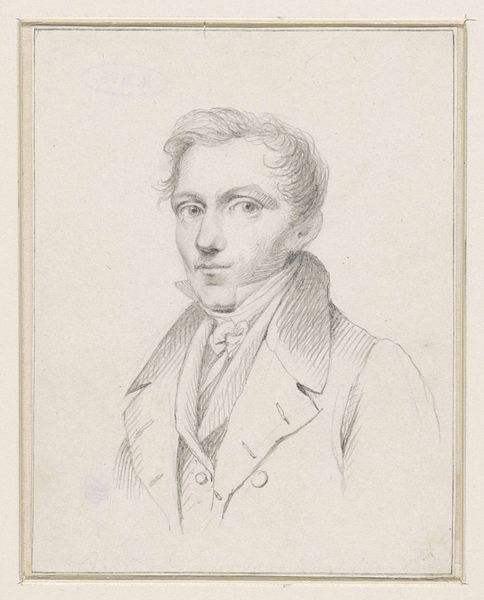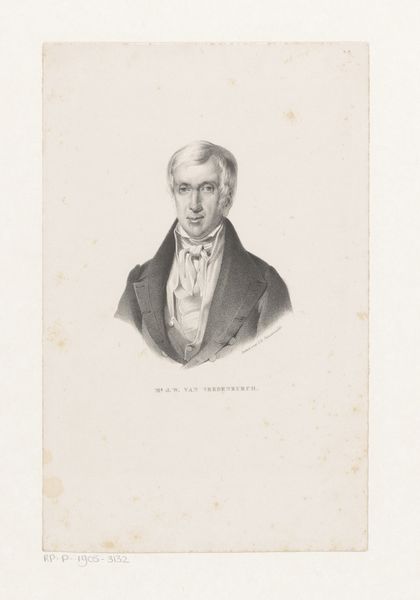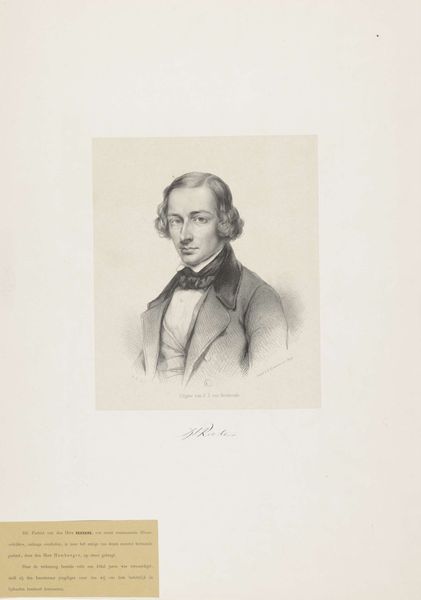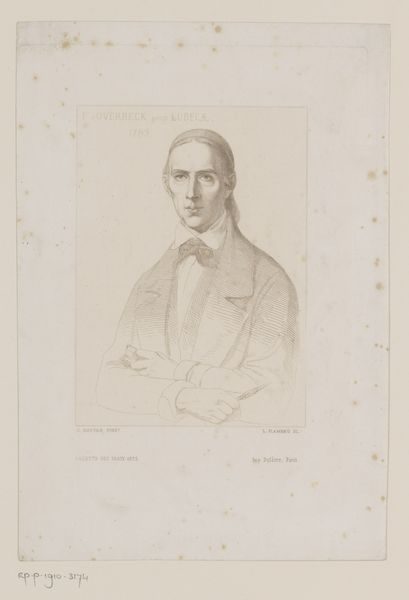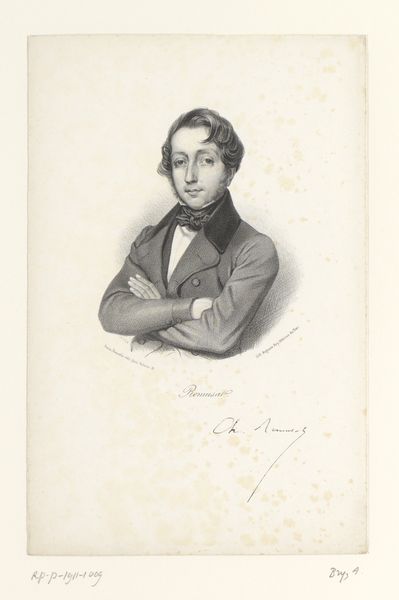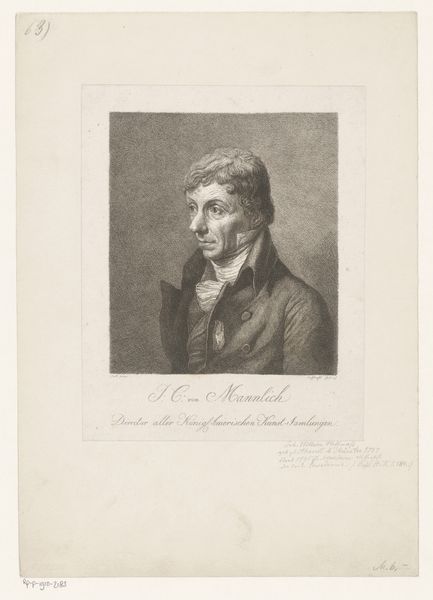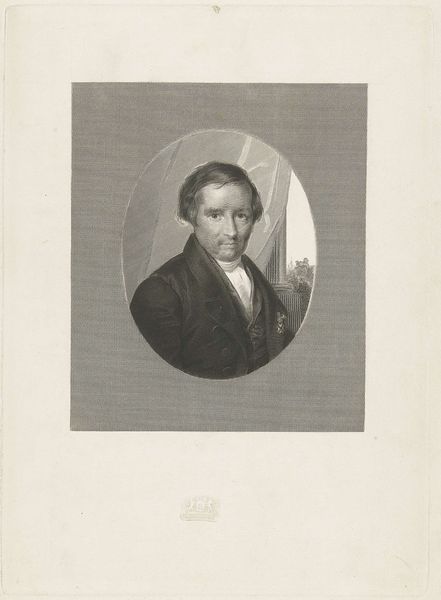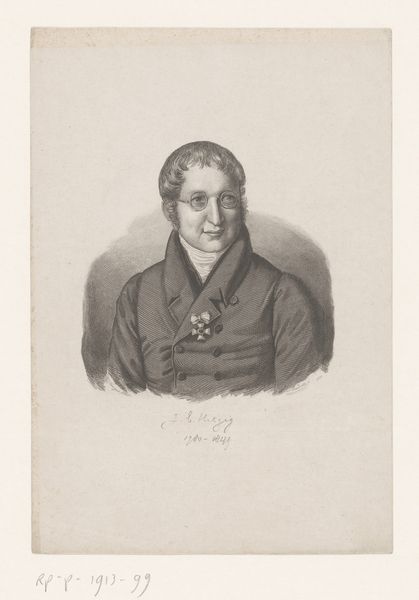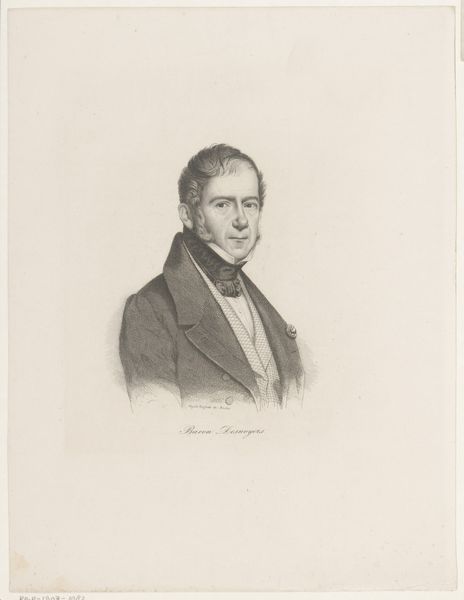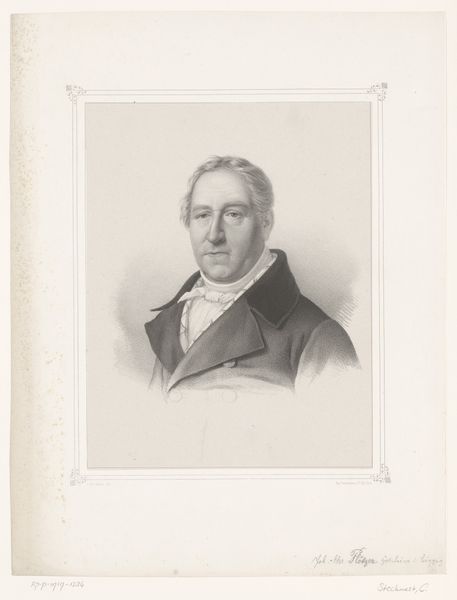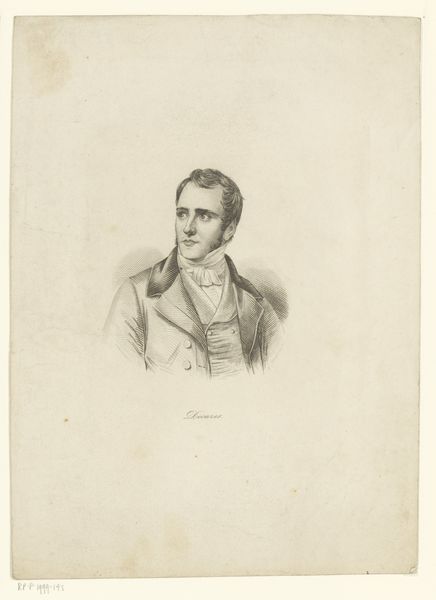
drawing, pencil
#
portrait
#
drawing
#
pencil drawing
#
romanticism
#
pen-ink sketch
#
pencil
Dimensions: height 202 mm, width 133 mm
Copyright: Rijks Museum: Open Domain
Curator: Let's turn our attention to this portrait of Carl Maria von Weber, crafted in 1823 by Carl August Schwerdgeburth. It's rendered in delicate pencil strokes. What strikes you first about it? Editor: The precision, actually. I mean, look at the subtle gradations in shading achieved with simple graphite. There’s a dedication to detail here that speaks of skilled labor. How did the artist's choice of medium influence the perception of Weber? Curator: Absolutely, and let's consider the context. This portrait arrives at a pivotal moment: Weber was composing operas that galvanized national sentiment during a time of immense social and political upheaval across Europe. The softness of pencil almost domesticates that public persona, doesn’t it? It was reproduced widely and helped build Weber's public image. Editor: It is quite romanticized. Look how his coat’s draped; notice the fashionable neckwear and neatly arranged hair. You get the impression the pencil acts as a commercial medium but one for the aspirational middle class more interested in artistry and beauty. I find that interesting. What was it like accessing art in those days? Curator: This portrait circulated widely as a print, playing a significant role in shaping Weber’s image and promoting his operas across social classes. The act of distributing these kinds of reproducible images allowed a broader public to feel connected to cultural figures. Editor: And the means of distribution became almost as important as the piece itself. How the work moves informs how the work means. One wonders about Schwerdgeburth and what his day-to-day production schedule might’ve looked like—a jobbing artist meeting societal demands, like a craftsman in a workshop? Curator: Precisely, understanding how images like this one moved and were consumed can tell us a lot about Romantic-era celebrity culture, as well as art’s role in disseminating political and cultural ideas. This wasn't just about artistic expression; it was a public project. Editor: In all, seeing the artistic craftsmanship and grasping its function allows you to interpret images in nuanced and complex ways. Curator: Indeed. It's always enriching to consider the dual lives of such pieces: their aesthetic value and their profound social implications.
Comments
No comments
Be the first to comment and join the conversation on the ultimate creative platform.
